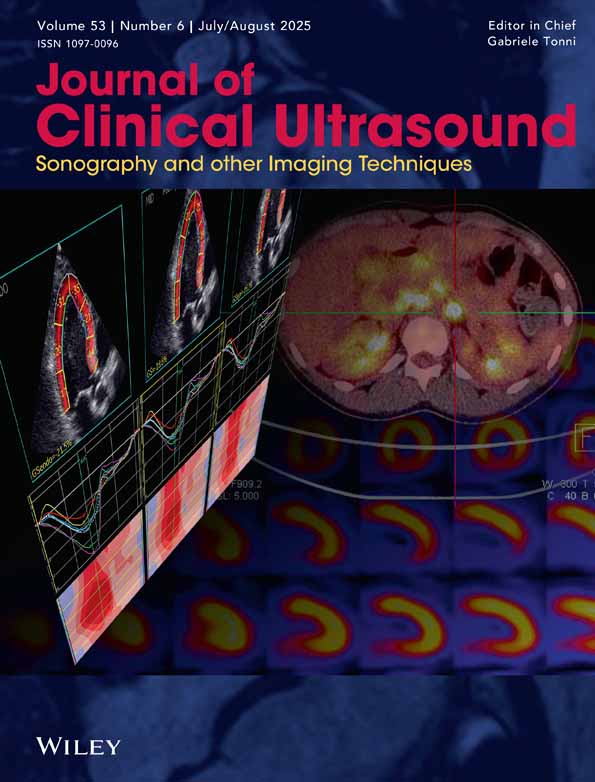Sonographic and mammographic appearances of granular cell tumors of the breast with pathological correlation
Abstract
Purpose.
To describe the sonographic and mammographic appearance of granular cell tumors (GCTs) of the breast in 6 patients with pathological correlation.
Methods.
A search was conducted of the cyto-histopathological database in a single institution from 1990 to 2004 for breast lesions given the diagnosis of GCT of the breast. Six patients with GCT of the breast who underwent mammographic or sonographic examination or both before surgery were included in this study.
Results.
The mammographic features of GCT of the breast were indeterminate in most patients, often presenting as an isodense mass with indistinct or spiculated margins. Calcifications were not a feature. The sonographic features of GCT of the breast mimicked carcinoma, including heterogeneous echotexture, indistinct margins, and hypervascularity. Hyperechogenicity was noted in 5 of 7 (71%) GCTs in this series. The cytomorphological features of GCT included sheets of large granular cells intersected by arborizing thin-walled blood vessels. The cells had round to oval nuclei, inconspicuous nucleoli, and abundant, ill-defined granular cytoplasm.
Conclusions.
Breast imagers should be aware that GCT of the breast is an uncommon differential in a minority of neoplasms that can be mistaken for breast cancer. © 2006 Wiley Periodicals, Inc. J Clin Ultrasound 34:153–160, 2006




